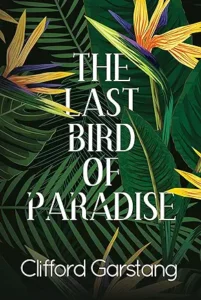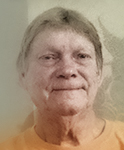Review | THE LAST BIRD OF PARADISE by Clifford Garstang (Korea)
 The Last Bird of Paradise
The Last Bird of Paradise
by Clifford Garstang (Korea 1976-77)
Black Rose Writing
340 pages
$6.99 (Kindle) $23.95 (paperback)
This novel is forthcoming in February 2024
Reviewed by Bill Preston (Thailand 1977-80)

Clifford Garstang (Korea 1976-77)
Reading the Author’s Note following this remarkable novel, I was struck by several ways Clifford Garstang’s experience has resembled mine. He first visited Singapore, the setting of the novel, in 1978, “as a young backpacker, touring Asia after spending two years as a Peace Corps Volunteer in South Korea.”
I also traveled to Singapore in 1978–from Thailand, between Peace
Corps teaching assignments. I too was fascinated by the emerging city-state, an oasis of calm and order compared to bustling, chaotic Bangkok or Jakarta. Six years later, he returned to Singapore, first as an associate and later as a partner of a U.S. law firm.
Some years prior to Peace Corps, while working with Legal Aid attorneys as a VISTA volunteer, I had briefly considered pursuing a law degree. Instead, after Peace Corps and earning an MA in English as a Second Language, I revisited Singapore on the way to work as a teacher trainer in Galang Refugee Camp in Indonesia, two hours by boat from Singapore. While at Galang, I made periodic trips to Singapore . . . noticing, like Garstang had, how “already some of its gritty charm was being erased by modernization.” Clifford Garstang returned in 2017 to research this book.
I returned again in 2011 to work for two years as an ESL editor. All of this is happenstance; nonetheless, reading The Last Bird of Paradise, I was a bit spooked to find a recurring character in the story with my surname – one Edmund Preston, a fictional English writer. A minor character, but sufficient to give me pause while navigating a story already fraught with perplexity and peril.
. . .
Make that two stories. Garstang presents The Last Bird of Paradise in dual storylines, both set in Singapore, roughly a century apart. Each features a young woman who, after leaving her home country, must struggle to remake her life in this unfamiliar new place. The stories, like the two protagonists, are at once in conversation with, and in counterpoint to, each other.
In the contemporary story, narrated in the third person, Aislinn Givens reluctantly leaves a promising New York City law practice to join her husband, Liam Connolly, when he accepts a promotion as assistant manager at a prominent investment firm in Singapore. Set in the aftermath of the 9/11 attacks, their decision is driven in part by a desire to escape the trauma of those terrorist acts. Both are young, attractive, and smart – elitist types, driven and ambitious, on successful career paths. Both have some serious personal issues. Aislinn, when stressed, is inclined to take pain killers, often with alcohol. She is also, it would seem, subject to hallucinations. Liam has a short temper, which can sometimes flare into violence. As the story progresses, he may or may not be having an affair, may or may not be guilty of unethical business dealings; in any case, he becomes increasingly secretive. Feeling lonely and adrift in Singapore, Aislinn repeatedly asks herself why she came.
It’s a good question, considering her husband’s erratic behavior and her own sense of dislocation and lack of purpose. Through Liam’s boss, the powerful and mysterious TJ Kwan, Aislinn gets a part-time consulting job that helps to make use of her legal skills. She soon wonders if her input is being taken seriously, and whether she got the job so that Liam and Kwan can keep tabs on her.
Visiting a local antiques shop, Aislinn is mesmerized by three paintings from the early twentieth century: “ . . . she noticed a group of paintings on the shop wall, and she froze. One of them, a scene of people in some sort of temple, seemed to move . . . telling her a story.” On impulse, Aislinn purchases the paintings. “There were three of them, each alive in its own way. At the center of the largest of the three, the temple scene, was a woman who was looking right at her, or at the artist, as if daring her to come closer. As she watched, smoke rose from a cauldron next to the woman and the scent of sandalwood drifted toward her. A trio of children danced across the temple courtyard. They laughed and pointed toward her, shouting words she didn’t understand. “Fascinating, isn’t it?” said the shopkeeper, startling Aislinn out of her reverie.”
In a novel filled with surprises, this is not the last time that paintings will “speak” to Aislinn. Or the last time she visits the shop. Soon after, she and the shopkeeper begin an affair. Did I mention that Aislinn also discovers a book of stories in the shop, written by Edmund Preston? But I’m getting ahead of myself.
. . .
In the parallel story, set at the beginning of World War I and revealed “first-person diary entries, Elizabeth Pennington, a budding young artist, emigrates to Singapore from England; or rather, she is sent there by her aunt to start a new life. As Elizabeth describes her predicament in an early diary entry: “. . . the choice was not mine to make. As a young woman, without a shilling of my own, I was at the mercy of what remained of my pitiable family, chiefly my maiden Aunt Margaret, who was scandalized by my supposed libertine ways and terrorized by the drumbeat of approaching war, and so, given no options whatsoever and no say in the matter in any event, I embarked.”
As we learn, she had been involved briefly with a prominent older English painter, no doubt scandalizing her Aunt Margaret. On the voyage, we are introduced to Edmund Preston, a fellow traveler with whom Elizabeth becomes acquainted. “He seems a jolly fellow, and my first impression is that he could be the source of much amusement both here and, ultimately in Singapore, where he is also bound.”
Elizabeth arrives in Singapore to live with her Uncle Cyril, who has a law practice and a beautiful home there. Quickly falling under the spell of the tropics, Elizabeth can barely contain herself, writing in her diary: “It is such a joy to take tea on the veranda, which wraps around three-quarters of the house, with the jungle only yards away. So lush! I have not yet ventured close to examine the varieties of trees, shrubs, and flowers, but I am excited to paint it all. Incredible colors: reds and oranges and yellows, and every shade of green. How vibrant!”
Determined to make the best of things, Elizabeth considers how her circumstances may in fact offer new and liberating experiences: “. . . Uncle says he will soon be introducing me around. I have hopes that there will be interesting people to meet. And young men, perhaps? While I am determined to create an independent life for myself, there is no reason why I should be entirely cloistered, is there?”
A rhetorical question; soon enough, Elizabeth finds romance in the person of Captain Charles Bingham of the Royal Navy, who is conveniently garrisoned nearby. In Elizabeth Pennington, Clifford Garstang creates a convincing and sympathetic character, through skillful use of period language and syntax — by turns, charming, shrewd, and amusing — that capture both her whipsmart and headstrong nature. Moreover, the author’s shift to first-person narrative makes our relationship with her more intimate.
Elizabeth’s descriptions of her artistic process are especially well rendered:
“I set up my easel next to a brilliant plant that Uncle calls the bird of paradise, because, I suppose, of its resemblance to a flamboyant variety of bird, perhaps one of the exotic creatures that frequent the jungle around us. I believe, after the events of the last few days, that I might like to be a bird of paradise,
majestic and arrogant, independent unafraid to speak my mind. The fronds sway so gently in the morning breeze that I might think they beckon, and indeed they do. “Come, look at me and touch me if you dare,” they seem to say, with good reason. The large orange flowers are almost indescribable, like the head of a bird, yes, but also like a flame held in the palm of one’s hand.”
Elizabeth’s intense, almost mystical identification with the flower — her desire to become it — call to mind the poet John Keats’ notion of negative capability –wherein an artist, through creative imagination, can experience the essential nature of a thing.
In another diary entry, she muses on a force greater than herself that guides her work:
“When I paint, I feel as though I am an instrument united with the brush, through which another creates the image. I am not so devout as to believe that “other” is God, although surely there is a divine force at work.”
Later, she blurs the distinction between herself and the subject she is painting:
“. . . I apply the paint, the oils that I favor, and I cannot fathom what I have done. How did this likeness come to be? It is not, as some have complained, a replica of the subject. It is, instead, an image that contains all my thoughts and emotions as well as my vision of the life of the depicted, and my own life as well. In the painting, I see not a man, but the village he has come from, the family he has left and hopes one day to rejoin, the toil he has abandoned, traded for unimaginable travails, the master he now serves. And so I see myself.”
As we come to discover — via one of Garstang’s ingenious plot twists —Elizabeth’s art works include the three temple paintings that will come to haunt Aislinn a century later. As Elizabeth writes of creating them: “The painting of the [temple] has become three, and there may be more. It continues to haunt me, this house of refuge for newcomers. It is, in a very real sense, my own house of refuge.”
This supernatural, surreal, fantastic — call it what you will — aspect of the novel is unsettling, and suggests that perhaps we, like Aislinn and Elizabeth, are not always in control of, or capable of fully understanding, our experience.
Clifford Garstang has ventured into this Twilight Zone-like territory before. In his earlier work, House Of The Ancients & Other Stories (2020), the title story and several others possess an eerie, disturbing, hallucinatory quality. The protagonists appear to be undergoing a mental breakdown of some kind, or are on the verge of one. In his story “The Scream,” for example, Oliver, the protagonist, becomes inexplicably unhinged when he visits an Oslo museum and confronts paintings by Edvard Munch — variations of Munch’s most famous work, The Scream: . . . ” he discovers that it isn’t a single painting, that Munch did several paintings of the same screaming figure, that they are all more or less alike:
“the same head that seems to be melting, the same voiceless oval mouth, the same hands raised to the face in terror. What has evoked the scream, Oliver wonders. What terror has the figure seen? What would make Oliver react so? He pictures Hiroshima, the horror, the flames, the flesh melting. Vesuvius. The Holocaust.”
“Oliver isn’t feeling well. His head buzzes, his throat rebels each time he tries to swallow. He forces himself to concentrate on the pictures, but they begin to move and he hears the screams, not just of the figure but of the hundreds, thousands who have seen the same thing, suffered the same terror . . .”
Oliver’s alarming experience of Munch’s paintings reminded me of Aislinn’s reactions to paintings by Elizabeth Pennington that she encounters in Singapore. For Aislinn, the paintings appear to signal advance warnings of some impending disaster. If this all sounds complicated and sometimes confounding, it is . . . in the way of a good mystery or thriller. Sifting between the twin stories —discovering links between them, connecting the dots — that’s the challenge and ultimate pleasure of reading The Last Bird of Paradise, which I will not spoil with further details. To be sure: many more twists and turns await, I’ve merely scratched the surface.
Clifford Garstang knows how to spin a great yarn–or two. Reading this novel may, among other things, change the way you look at art.
•

Bill Preston (Thailand 1977-80)
Reviewer Bill Preston (Thailand 1977-80) taught English and trained Thai teachers of English; subsequently, he interviewed Lao and Khmer refugees seeking asylum in the Unites States. At Galang refugee camp, he trained Indonesian teachers, who taught English to Vietnamese refugees. For many years he edited English Language Teaching materials for several educational publishers. His multicultural anthology, A Sense of Wonder: Reading and Writing through Literature, was published by Pearson Education (2003). His poetry collection, Strange Beauty of the World: Poems, was published in August 2019 by Peace Corps Writers, and won the 2020 Peace Corps Writers Award for Best Book of Poetry.
No comments yet.
Add your comment